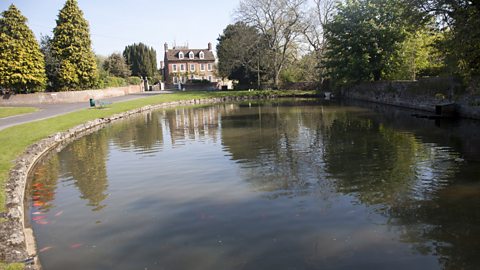Features of a freshwater pond ecosystem
The freshwater pond ecosystemThe living organisms in a particular area, together with the non-living components of the environment. is very common in the UK.

A freshwater pond in Wiltshire
The interactions between the living and non-living components of the ecosystem are important.
The freshwater pond ecosystem consists of the following:
- Pond bottom - there is very little oxygen or light at the bottom of the pond. decomposerAn organism which eats dead organisms, fallen leaves, animal droppings, etc, and breaks them down into simpler materials. and scavengerAn animal (or insect) that feeds on decaying flesh or plant material. live here where they feed on dead material, eg water worms and rat-tailed maggots.
- Mid water - fish are the main predators here. Food is found on the pond bottom or the pond surface. Animals here breathe through their skin or gills, eg stickleback fish, water fleas and dragonfly nymphs.
- Pond surface - animals here breathe through their gills, skin or lungs. There is plenty of oxygen and light here. Animals found here include ducks, water boatmen, midge larvae and tadpoles.
- Pond margin - plants provide a sheltered habitat for insects and smalls animals such as frogs. There is lots of light and oxygen so plants such as marsh marigold thrive.
- Above the pond surface - birds such as kingfishers and insects like dragonflies are common here.